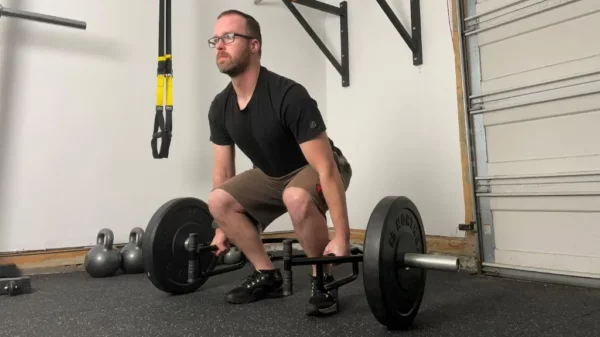Rowing machine workouts have been a fan-favorite conditioning choice for a while—and they’re not going anywhere anytime soon.
These practical machines provide an intense full-body workout in minimal time. Throw in some killer cardio and conditioning work, and you’ll build the endurance you need to get through even the toughest workouts.
Until the boredom sets in. 🥱
In this article, we’ll cover eight inspiring rowing machine workouts to help you accomplish your fitness goals and keep your home gym experience fresh.
Let’s rock and row! 🚣

1. Steady-State Rowing Workout
Steady-state cardio on your rowing machine is a great way to improve your cardiovascular endurance and aerobic conditioning. It’s a low-impact activity that’s ideal for active recovery and setting a baseline to monitor your progress.
How to:
- Row at a consistent pace for a set duration (e.g., 20-30 minutes).
- Focus on maintaining proper form and breathing rhythm.
2. Interval Training Workout
Interval training on a rowing machine is an effective way to capitalize on the calorie-burning benefits of HIIT (high-intensity interval training) and stimulate excess post-exercise oxygen consumption (EPOC). In other words, the after-burn, babyyyy. 🔥
This style is also great for improving your VO2 max and training your anaerobic system.
How To:
- Alternate between high-intensity rowing and low-intensity recovery periods.
- Example: 1 minute of hard rowing followed by 1-2 minutes of easy rowing; repeat for 15-20 minutes.
3. Pyramid Intervals Workout
Pyramid intervals are a progression of standard interval training that ramps up the intensity to a peak, then slowly brings you back down. It’s a great way to add an extra challenge and variation to your rowing workouts.
How to:
- Gradually increase and then decrease the intensity and duration of rowing intervals.
- Example: 1-2-3-4-3-2-1 minutes of hard rowing with equal recovery time between intervals (1 minute on, 1 minute off, 2 minutes on, 1 minute off, etc.)
4. Reverse Pyramid Intervals Workout
Level up AGAIN with reverse pyramids, starting and ending with the more intense intervals.
How To:
- Start with a longer interval of hard rowing and gradually decrease the duration.
- Example: 4-3-2-1-2-3-4 minutes of hard rowing with equal recovery time (4 minutes on, 1 minute off, 3 minutes on, 1 minute off, etc.)
5. Tabata Rowing Workout
Tabata is a specific type of HIIT training with consistently timed intervals, typically shorter in frequency than other HIIT workouts. The 20/10 split was developed by Dr. Izumi Tabata, a Japanese researcher who conducted a study on interval training. It’s believed to be the most “effective” split.
How To:
- Perform ultra-high-intensity rowing for 20 seconds, followed by 10 seconds of rest.
- Repeat for 4 minutes (8 rounds).
6. EMOM Rowing Workout
EMOM, or “every minute on the minute,” is nothing new to people who do a certain style of training with a trademarked name that’s basically become the Voldemort of our website. ☠
The goal is to complete the specified distance (dealer’s choice) within the minute, using the remaining time within the minute to rest. When the clock rolls over, you do it again.
This style of interval training is effective for learning to pace yourself while improving your cardiovascular endurance. It’s easily scalable to keep things interesting—set a higher distance goal as you progress over time.
How To:
- Set your timer for 1-minute intervals.
- At the start of each minute, row at a high intensity for a specified distance (e.g., 200 meters).
- Use the remaining time in each minute as your recovery period.
- Repeat the pattern for 20 minutes.
7. Distance Challenges
Another form of steady-state cardio work, this exercise consists of row, row, rowing your boat until you reach your goal. You can base your goal on overall distance, growing over time, or progress by pushing yourself to achieve the same distance in less time.
How To:
- Set a distance goal and row at a consistent pace to achieve it.
- Example: Row 2000 meters as fast as possible or increase your distance by 500 meters a week.
8. Total-Body Circuit
You don’t have to be a part of the Training Style That Must Not Be Named to add some variety to your rowing workouts.
Grab a few dumbells or kettlebells or choose a few killer bodyweight exercises and create your own circuit. This is a great way to build some muscle while burning calories and boosting your endurance.
How To:
- Perform a 5-minute warm-up row.
- Row for 1 minute at a moderate pace.
- Immediately transition to bodyweight exercises (e.g., push-ups, bodyweight squats, mountain climbers) for 1 minute.
- Row for 1 minute at high intensity.
- Transition to a set of dumbbell exercises (e.g., dumbbell rows, overhead presses) for 1 minute.
- Repeat the pattern of 1-minute rowing and 1-minute strength exercises for the entire duration of the workout.
Choosing the Right Rowing Machine for Your Home Gym

If you’re new to the rowing game, you may be wondering how to choose the right rowing machine for your gym. Here are a few considerations to keep in mind:
- Space – Most rowing machines are designed to be easily portable and storable (ours are, anyway). Even so, they take up a bit of space when in use. Check your measurements and figure out where you can use and store your rower.
- Budget – Ah, the dreaded budget. We’re big on finding that sweet spot between value and cost, but only you can determine how much moolah you can spend. Rowing machines cost anywhere from $500 to over $1200, depending on the style and features. Don’t forget to peep that warranty, though.
- Features – Whether you want the basics for a good workout, great. If you want Bluetooth surround sound so you can rock out to 80s power ballads, that’s great too. However, these features affect your budget, so determine your top priorities and go from there. Many of us would do anything for the love of rowing, but we won’t do that… driving up the cost, that is. 🎤
- Resistance Style – There are different resistance styles to choose from, including air resistance, magnetic resistance, and hydraulic resistance. The Bells of Steel Blitz Rower is air resistance and functions just like an air bike. You might say we’re a BIG FAN of these. Get it? Fan? Hello?
There are pros and cons for every type of rower. Take some time to reflect and determine what works best for you.
Rowing Machine Workout FAQs
We get a lot of questions about rowing machine workouts. To save our customer service team from working overtime, we’ve assembled a few of them here.
1. How do I set up a rowing machine at home?
Different types of rowing machines have different set-up instructions.
2. What is the correct rowing technique to avoid injury?
Proper rowing technique is crucial to prevent injury and get the most out of your rowing machine workouts.
Start by sitting on the rowing machine with your feet securely fastened in the foot straps. Grab the handle with an overhand grip, keeping your back straight and shoulders relaxed.
As you push off with your legs, engage your core and lean slightly back. Once your legs are extended, lean back a bit more and pull the handle towards your lower ribs, keeping your elbows close to your body.
Reverse the motion by extending your arms, leaning your upper body forward, and bending your knees to return to the starting position. Maintain fluid and controlled movement, avoiding jerky motions or rounding your back.
And, of course, always talk to your healthcare provider before trying something new!
3. How can I make my rowing workouts more challenging?
You can make your rowing workouts more challenging by adding time, speed, or distance. Shortening your rest intervals or increasing your active intervals will also take your training to the next level.
4. How long should a rowing machine workout be?
Rowing machine workouts are tougher than they look. Start with a small duration of 5-10 minutes and scale up over time. If you’re doing steady-state rowing, your workout may be longer than if you’re doing intense interval training.
5. Are there any common mistakes to avoid during rowing?
Losing form is the most common mistake (see question 2 for more detail).
There’s also a misconception that rowing on a rower should be similar to rowing with a barbell or cable machine, which isolates the upper body. Instead, you’re using your entire body for the rowing motion. In other words, engage those legs, sailor!
Ready for a Killer Rowing Machine Workout?
Try these effective rowing machine workouts to make the most out of this incredible piece of home gym equipment. Find a rower that suits your needs and prioritize proper form to avoid injury. Always consult with a healthcare provider before trying new exercises.
Now, row off into the sunset! 🌅








